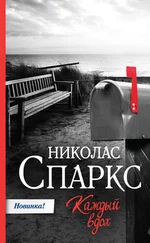This electric, intensely sensual aura would linger long after we left the exhibition and returned to the hotel. Over dinner, her gaze seemed to glitter with heightened awareness, and there was a marked grace to her movements that I hadn’t seen before. I could barely wait to get her back to the room, where she proved especially adventurous and passionate. All I remember thinking is that whatever it was that had stimulated her this way, I wanted it never to end.
In other words, as I’d just told her, I was selfish.
“You are not selfish,” she says to me. “You are the least selfish man I have ever known.”
To my eyes, she looks as stunning as she did on that last morning of the honeymoon, as we stood near the lake. “It’s a good thing I’ve never allowed you to meet another man or you might think differently.”
She laughs. “Yes, you can make a joke. You always liked to play the joker. But I tell you, it was not the art that changed me.”
“You don’t know that. You couldn’t see yourself.”
She laughs again before growing quiet. Suddenly serious, she wills me to pay attention to her words. “This is what I think. Yes, I loved the artwork. But more than the work, I loved that you were willing to spend so much time doing what I loved. Can you understand why that meant so much to me? To know that I had married a man who would do such things? You think it is nothing, but I will tell you this: There are not many men who would spend five or six hours a day on their honeymoon talking to strangers and looking at art, especially if they knew almost nothing about it.”
“And your point is?”
“I am trying to tell you that it was not the art. It was the way you looked at me while I looked at the art that changed me. It is you, in other words, who changed.”
We have had this discussion many times over the years, and obviously we are of different opinions on the matter. I will not change her mind, nor will she change mine, but I suppose it makes no difference. Either way, the honeymoon set in motion a summer tradition that would remain with us for nearly all our lives. And in the end, after that fateful article appeared in the New Yorker , the collection would, in many ways, define us as a couple.
Those six paintings – which I casually rolled and stored in the backseat of the car for the ride back home – were the first of dozens, then hundreds, then more than a thousand paintings that we would eventually collect. Though everyone knows of Van Gogh and Rembrandt and Leonardo da Vinci, Ruth and I focused on twentieth-century American modern art, and many of the artists we met over the years created work that museums and other collectors later coveted. Artists like Andy Warhol and Jasper Johns and Jackson Pollock gradually became household names, but other, then less well-known artists, like Rauschenberg, de Kooning, and Rothko, also created work that would eventually sell at auctions at Sotheby’s and Christie’s for tens of millions of dollars, sometimes more. Woman III , by Willem de Kooning, sold for over $137 million in 2006, but countless others, including work by artists like Ken Noland and Ray Johnson, also had sales prices that reached into the millions.
Of course, not every modern artist became famous, and not every painting we bought became exceptionally valuable, but that was never a factor in our decisions about whether or not to buy a piece of art in the first place. These days, the painting I treasure most is worth nothing at all. It was painted by a former student of Ruth’s and hangs above the fireplace, an amateur piece that is special only to me. The New Yorker journalist ignored it completely, and I didn’t bother to tell her why I treasured it, because I knew she wouldn’t understand. After all, she did not understand what I meant when I explained that the monetary value of the art meant nothing to me. Instead, all she seemed to want to know was how we’d been able to select the pieces we did, but even after I explained it, she didn’t seem satisfied.
“Why did she not understand?” Ruth suddenly asks me.
“I don’t know.”
“You said to her what we had always said?”
“Yes.”
“Then what was so difficult about it? I would talk about the ways in which the work affected me…”
“And I would simply observe you as you talked,” I finished for her, “and know whether or not to buy it.”
It wasn’t scientific, but it worked for us, even if the journalist was frustrated by this explanation. And on the honeymoon it worked flawlessly, even if neither of us would fully understand the consequences for another fifty years.
It isn’t every couple, after all, who purchases paintings by Ken Noland and Ray Johnson on their honeymoon. Or even a painting by Ruth’s new friend Elaine, whose work now hangs in the world’s greatest museums, including the Metropolitan Museum of Art. And, of course, it’s almost impossible to conceive that Ruth and I were able to pick up not only a spectacular painting by Robert Rauschenberg, but two paintings by Elaine’s husband, Willem de Kooning.
15
Luke
Although he’d been preoccupied with thoughts of Sophia since the night they’d met, they didn’t compare with the obsession he felt the following day. As he worked on some fencing in the far pasture, replacing posts that had begun to rot away, he occasionally found himself smiling as he thought about her. Even the rain, a cold autumn downpour that left him drenched, did little to dampen his mood. Later, when he had dinner with his mom, she didn’t even attempt to hide a smirk that let him know she was fully aware of the effect that Sophia had on him.
After dinner, he called and they talked for an hour; the next three days followed the same pattern. On Thursday evening, he made the drive to Wake Forest, where they finally had a chance to walk around campus. She showed him Wait Chapel and Reynolds Hall, holding his hand as they strolled through Hearn and Manchester Plazas. It was quiet on campus, the classrooms long since emptied of students. Leaves had already begun to fall en masse, carpeting the ground beneath the trees. In the residence halls, lights were blazing and he heard faint strains of music as students began readying themselves for yet another weekend.
On Saturday, Sophia returned to the ranch. They went for a short ride on horseback, and afterward she followed him around as he worked, lending a hand whenever she could. Again they ate at his mother’s place and then went back to his, the glowing fire as welcoming as it had been the week before. As had become usual, she headed back to the sorority once the fire began to burn lower – she wasn’t yet ready to spend the night with him – but the following day, he drove with her to Pilot Mountain State Park. They spent the afternoon hiking up to Big Pinnacle, where they shared a picnic lunch and took in the view. They’d missed the pageant of autumn color by a week or so, but beneath the cloudless sky, the horizon stretched all the way to Virginia.
In the week following Halloween, Sophia invited Luke back to the sorority. They were having a party on Saturday night. The novelty of his profession and their dating status must have worn off since he’d first shown up at the house, since no one paid him much attention after the initial hellos. He kept a wary lookout for Brian, but he was nowhere to be found. On their way out, he remarked upon it.
“He went to the football game at Clemson,” Sophia told him. “Which made tonight an ideal night to visit.”
The following morning, he returned to the sorority house to pick her up, and they walked around Old Salem, taking in the sights, before returning to the ranch for their third weekend in a row at his mother’s. Later, as they were saying good night beside her car, he asked if she was free the following weekend – he wanted to bring her to the place where he’d vacationed as a child, a place where they could ride trails amid breathtaking views.
Читать дальше



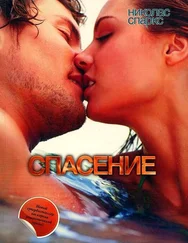


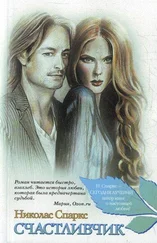

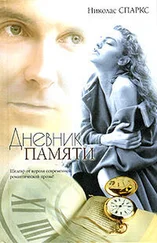
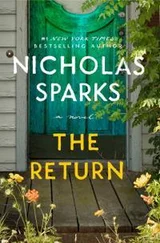
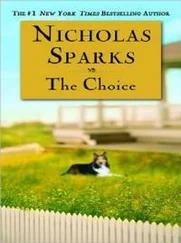
![Николас Спаркс - Каждый вдох [litres]](/books/414723/nikolas-sparks-kazhdyj-vdoh-litres-thumb.webp)
